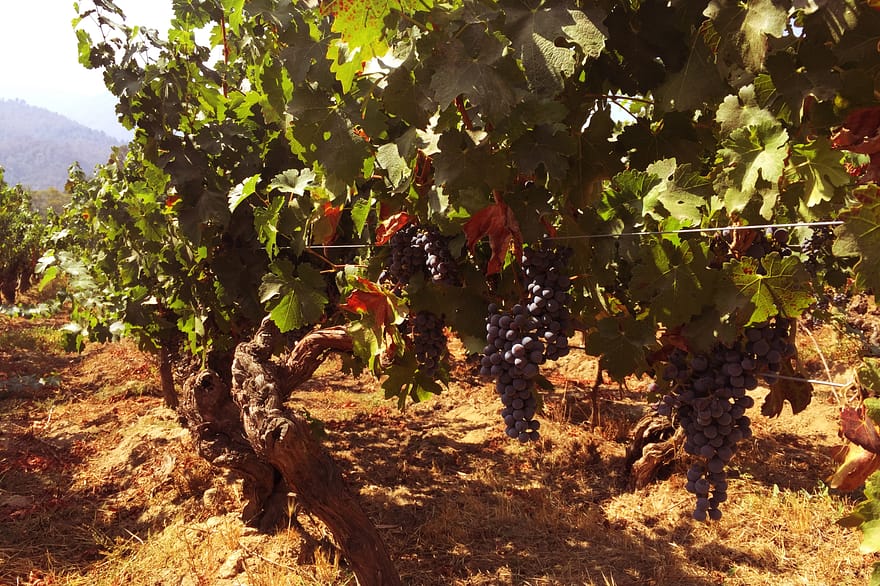Consumers have been showing a growing interest about the origins of their food and drink, while the demand for sustainable practices gets stronger across the markets. When it comes to wine, UK alone has seen a growth of 15% on the consumption of organic and biodynamic wine, compared to the previous year.
The market share of organic and biodynamic products is still relatively small, but they are getting traction from consumer demand and you will be seeing more of them in the shelves.
But what are organic wines, to start with? And how are they different from the biodynamic ones? Are they any different in taste? In the end, why should you care?
Organic Wines
Simply put, organic wines are produced without the use of synthetic pesticides or synthetic fertilizers. This requires the adoption of a series of sustainable practices to ensure proper maintenance of the vines.
The regulation of organic wines is heavily focused on restricting the use of chemicals, but there are differences on how these rules are defined around the globe. In the USA, organic wines cannot have added sulfites. In the EU however, the addition of sulfites might not prevent a wine from getting the “organic” stamp. The EU regulation defines a maximum level of sulfites for organic wines which is lower than the non-organic ones. This allows sulfites to be added as long as the total concentration is under this level.
The use of certain additives such as gelatin or egg whites for fining, or yeast to speed up the fermentation is permitted. Also, practices that still don’t have a substitute in the market might be used in the production, with certain restrictions. Those include heat treatments, filtration, reverse osmosis and the use of ion exchange resins.
The regulation for organic wines in the EU became official in 2012. All wines complying with the requirements have been bearing the green leaf logo on the bottle since then.
In the US, the Department of Agriculture is responsible for the organic certification. The bottles that comply with the country regulations can show a “USDA-Certified Organic” stamp.
In the absence of chemicals, a set of practices come into play to manage the health of the vines. As example, we have the so called “sexual confusion”, in which pheromone pods are placed around the vineyard. It has shown to be effective especially against white moths. The way it works is that the essence confuses the male insects reducing the changes of the female insects being fertilized.
Another practice is to use cover crops (clover, ryegrass, barley, dandelions). Each one brings a different kind of mineral to the system. They can be also ploughed and mixed into the soil, helping to fix nitrogen, among others.


Biodynamic wines
Imagine a wine production going even further into wearing the hat of sustainability, to the point that it’s all grounded in a philosophical stream.
Biodynamics are much closer to a philosophy than to just a series of sustainable practices. It adopts a holistic approach to farming, seeing it as a complex system of inter-dependencies between animals, soil, plants, weather and even planetary alignments. The practices look at fostering a healthy and sustainable balance between all those elements. If there is any type of unbalance in this chain, the treatment is done with natural materials applied in specific ways to the soil, compost, and crops, with the intention of engaging non-physical entities and elements.
The philosophy is wide and complex. We can compare it to lenses through which you see and interpret the world, that eventually dictates how you manage agricultural practices.
The concepts of biodynamics were created by the Austrian philosopher Rudolf Steiner. He started applying it 1924, to help a group of farmers fixing recurring issues in the fields.
The biodynamic certification for farms and products is managed worldwide by Demeter International.
Natural wine (or vin naturel)
I am commenting also on a third category of wines that is often mentioned in the context of organic and biodynamic products. “Natural” wines (or frequently referred to “vin Naturel” in Europe) are a bit of a question mark. The practices around their production are not standardized nor the use of the term is regulated in the industry.
Natural wines use organically or biodynamically produced grapes. The vinification process is oriented towards letting the environment do its job creating the wine. While in organic and biodynamic productions we still have a steering hand from the winemaker designing the wine, natural wines are produced with as little intervention as possible from the human side.
No yeast is used. The wild yeast (naturally found on the skin of the grapes) is the one responsible for the job of converting the grape juice into wine. It adds a bit of complexity and new flavors, but at the same time the results might be a bit unpredictable. Since there are no control over the concentration of yeast or even the presence of other fermenting agents, each wine might have its own personality to some extent.
Filtration and finning are also not used. For this reason, you will often find natural wines to have sediments and look cloudy.
No correction is done. Meaning that the acidy and sugar levels in the wine are defined by the natural process as well. Reinforcing the name of this wine category.
Sulfites are not added during the process either.
When it comes to the experience, in my opinion, natural wines are not for every taste. The wild yeast and the natural style of the production help developing wild flavors and textures in the wine. Aeration and decanting can help taming some of those before enjoying the first sip.
In between organic and biodynamic wines, we also find half-ways. You might have already come across wines with “made with organic grapes” or “made with biodynamic grapes” printed on the labels. Despite the fact that these wines were produced from grapes that undergo organic or biodynamic practices, the overall production processes were not that strict. In this case, they didn’t qualify for having the organic or bio stamp on the bottle. As an example, it is not uncommon to find wines “made with organic grapes” in which sulfites were added, in order to extend the life time of the wine.
So why hasn’t everybody shifted to organic or biodynamic wines yet?
Little changes might take time to materialize, but they are slowly happening.
After thoughts and trends
The public has been creating a growing pressure to have chemicals abandoned from food production. It has been a significant driving force for more eco-friendly practices, natural and chemical-free products.
The push is not only coming from consumers but also from people that are being directly impacted by the use of chemicals.
Bordeaux is a large producing region known to use pesticides in the vineyards for a long time. After reported cases of sick workers and growing popular pressure, they started to set an example in the industry. Saint Emilion is mandating with the 2019 vintage, that every bottle produced in the area will have been made from grapes grown with sustainable farming methods, such as organic or biodynamic viticulture. The mandate is being enforced by the local wine council for four Bordeaux appellations. Any wine not farmed sustainably may only be bottled as generic Bordeaux.
Wine producing regions have created a micro ecosystem over the years with the traditional viticulture.
Questions have been raised among farmers and professionals in agriculture on whether the change on methods and treatments would help new diseases to appear.
Great part of the wine producing regions today don’t have vines that are native from their ecosystems. Agricultural techniques and synthetic products, to some extent, had their role in the beginning to have the vines thriving. Since then, technology and understanding of the environment has increased massively and we are in a better position now to look at how to produce great wine, sustainably.

